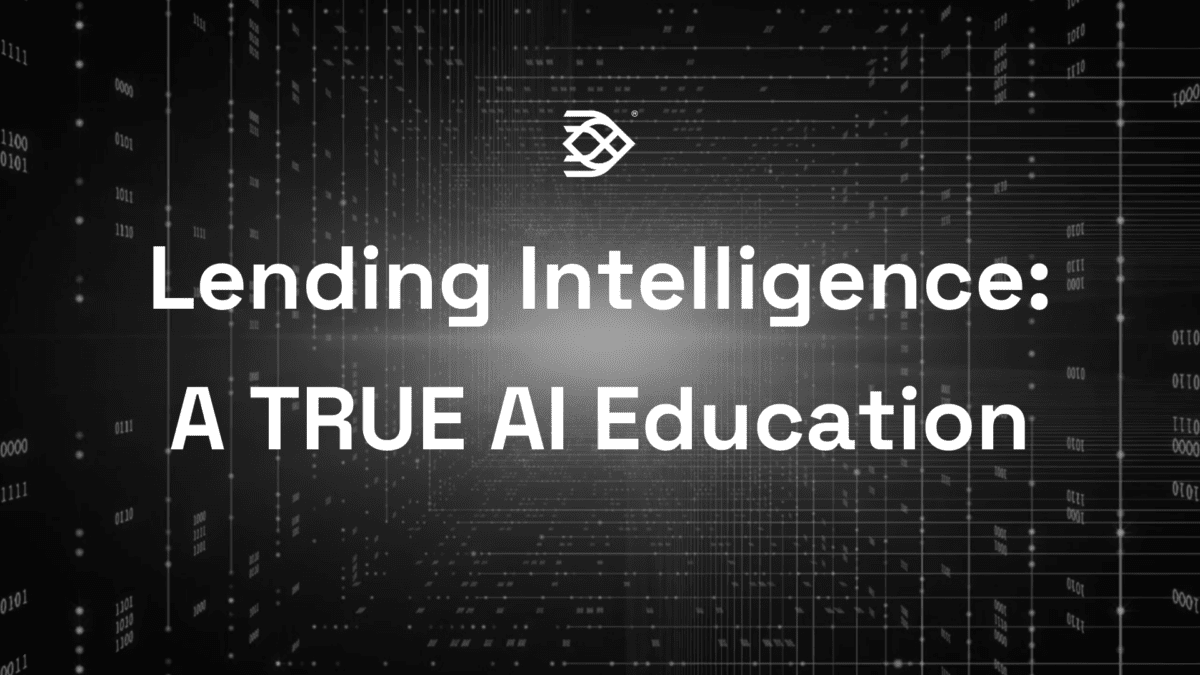By Ari Gross, CEO and Co-Founder at TRUE
I’ve spent my career at the intersection of AI and document automation, helping industries unlock the full potential of intelligent systems. My background in computer science and AI-driven automation has shown me firsthand how technology can revolutionize industries that rely on complex data processing.
The mortgage industry is on the cusp of a technological revolution, with artificial intelligence (AI) leading the charge. Traditional human cognitive processes are often valued for their nuanced understanding, leading to skepticism about AI’s ability to replicate that level of comprehension.
A significant hurdle in automating knowledge work is building trust in AI-automated systems, especially for critical decisions. While Generative AI (GenAI) technology can understand and generate content, the primary obstacles in automating a process are:
- Making sure the automated AI solution or Assistant is at least as accurate and reliable as its human counterpart.
- Trusting the AI Assistant to make correct decisions.
- Gaining user adoption.
Of course, these areas are tightly coupled: the greater the proficiency of the automated solution, the greater the level of trust within the organization, and as a result, the higher user adoption will be within the company.
In the home lending space, loan officers (LOs), loan officer assistants (LOAs), and underwriters (UWs) need assurance that AI Assistants can be reliable partners. To accomplish this, AI-based solutions need to be capable of providing reliable, human-readable outputs that support their decision-making. To decrease the time required to close a home loan, the level of reliable, trusted automation in home lending must increase significantly. What’s required? Touchless, instant document understanding, including indexing, data extraction, and versioning that are fully integrated with income, asset, and underwriting solutions.
To further automate the home lending industry, moving it closer to a real-time experience for borrowers and lenders alike, it’s important to utilize the latest advanced technology, specifically LLM and GenAI-based solutions. It’s also crucial to understand how we can build powerful AI-based methods that yield touchless automation solutions by blending classical AI and GenAI-based technology. Let’s take a look beyond the AI hype and seek to understand the specific AI technologies used in Traditional AI and LLM-based GenAI, and the advantages of synthesizing Traditional AI and GenAI methods.
Traditional AI: Enhancing Efficiency, Accuracy, and Automation
Traditional AI, based largely on machine learning and expert system logic, is designed to perform specific tasks with high accuracy. In the mortgage sector, this translates to automating and optimizing critical processes related to document classification and data extraction (DE), in addition to implementing logical rule-based systems for QC, income analysis, underwriting, and audit. Traditionally, classification has relied primarily on machine learning methods, such as neural nets, while data extraction, underwriting, and audit have been primarily logic-based.
Use cases of Traditional AI in mortgage automation include:
- Document Classification and Data Extraction: AI algorithms can classify, split, version, and stack incoming mortgage documents in real-time, while extracting data and verifying correctness, reducing manual errors, loan defects, and processing times.
- Loan Defects: AI-powered systems can analyze loans as they’re being manufactured, finding document and data defects in real-time. Real-time detection of loan defects minimizes the time required to fund a loan, as well as the time to sell a funded loan to investors.
- Personalized Customer Service: Chatbots and virtual assistants driven by Applied AI can provide instant support to borrowers, answering queries and guiding them through the mortgage process.
Application of LLMs and GenAI: Accelerating Home Lending and Revolutionizing Loan Manufacturing
GenAI is already making an impact on the capability of closing home loans much faster. The LLM and transformer technology that forms the basis for GenAI can be used to derive an in-depth analysis of a home loan, whether being processed or already closed. This technology allows us to understand complex income documents with no human in the loop. GenAI also has the ability to function as the kernel or engine of an AI Assistant to the loan officer, loan officer assistant, or underwriter, answering any questions about the loan in real-time, including reliability of income, analysis of assets, or completeness of loan package (i.e., ready to fund).
Use Case:
- Extracting Key Data from Documents with No Human in the Loop
- Natural Language Processing (NLP): Advanced NLP models can be applied to extract meaning and understand content of unstructured document data (e.g., scanned images or PDFs). This reduces the time it takes to review and interpret documents manually.
- Data Validation and Accuracy: GenAI can cross-check extracted document data against internal databases or third-party sources (e.g., credit reports, public records) to ensure accuracy. This reduces the need for human verification and speeds up the process.
- Finding Defects Early in the Loan Manufacturing Process
- Automated Quality Checks: GenAI can be trained to detect defects or inconsistencies in the loan application process by comparing the data in the documents with predefined underwriting guidelines. For example, it can identify missing information, mismatched data, or unusual patterns that might indicate fraud or errors.
- Anomaly Detection: Using machine learning models, GenAI can flag anomalies or unusual patterns in the data (e.g., income discrepancies, loan-to-value ratios that don’t fit guidelines), helping to catch potential issues early in the process, and avoiding delays or rework.
- Enhanced Communication and Customer Engagement
- GenAI-powered tools can assist in enhancing personalized communication with lending officers processing the loan, who need to know when loan documents arrive and what they contain. Likewise, borrowers would appreciate receiving personalized updates as to the current status of their loan.
- Customer Support: LLMs can power chatbots that provide instant and accurate answers to LO, LOA, processor and borrower questions, thereby improving the lending experience.
- Content Generation: LLMs can generate personalized loan summaries and other content, freeing up human employees for more complex tasks.
Meeting Real-Time Demands with Blended Technology
In today’s fast-paced market, lenders gain a competitive edge by providing real-time decisioning. These rapid lending decisions, which include loan pre-qualification, are crucial for maintaining client engagement. To attain real-time loan decisioning, we need lending solutions that are instant and touchless. This has been very difficult to achieve with any specific technology, whether it’s traditional or GenAI.
Traditional document processing for income verification, for example, may attain accuracy rates for classification and DE that are in the 90%-95% range. These rates are good but not high enough to enable real-time, automated loan decisioning, where accuracy rates of 99.5%+ are generally required. Similarly, LLM technology is also good, in a similar range of 85%-95%, but not accurate enough to enable a touchless process.
TRUE addresses this by blending existing applied AI technology, based on deep learning and document parsing, with LLMs and GenAI, achieving significantly higher accuracy rates of 99.5%+ that are not attainable using a single method. As a single process can generally not check its own correctness, very high accuracy and passthrough rates are enabled by synthesizing two or more orthogonal or distinct methods together. This algorithm, blending two or more highly accurate and orthogonal methods, enables near-instantaneous, no-human-in-the-loop processing.
The Future of AI in the Mortgage Industry
As AI-based technology becomes ever more accessible, it’s crucial to address the inherent risks, such as AI hallucinations and the inability of individual AI methods left unchecked to determine whether they can be considered trusted and actionable. TRUE differentiates itself with patent-pending AI technology, blending traditional AI recognition methods with AI-based LLM, transformer, and GenAI technology, providing a ‘sanity check’ that ensures trusted and actionable documents and data in real-time.
The future of AI in home lending is not about replacing human workers but rather augmenting their capabilities. By automating routine cognitive tasks and providing data-driven insights, AI can accelerate the time to decide and fund a home loan, all while empowering mortgage professionals to focus on building relationships with clients and providing personalized services.
Historically, there’s been lots of hype about AI and its ability to automate the knowledge worker in many areas, including home lending. It’s natural for people to assume that this quantum change in AI loan processing and decisioning is still much over-hyped and way out in the future. But the change that we’re seeing now, with the advent of LLMs, and GenAI, seems to be real and here to stay. Moreover, some of the largest, most AI-savvy US lenders have reported significant progress in reducing loan-based human touchpoints and time to close.
Mortgage lenders simply cannot afford to be left behind. By understanding the advantages of blending both Traditional AI and GenAI methods, lenders can unlock new levels of efficiency, automation, personalization, and customer satisfaction.
Join the conversation!
Subscribe on LinkedIn to our newsletter or look out for my future blogs on AI in the mortgage industry, where I’ll explore technical advancements like intelligent automation, AI-driven analytics, and self-learning systems. We’ll discuss how these technologies are transforming document processing, risk management, and overall efficiency in the industry. Join us to learn about the future of AI in home lending.



